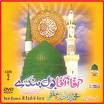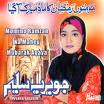Name : | Jaffer (a.s.) - the 6th Holy Imam |
| Title : | As-Sadiq, Sadiq-e-Aal-e-Mohammad(a.s.) |
| Agnomen : | Abu-Abdullah |
| Father : | Imam Mohammad Baqir(a.s.) - the 5th Holy Imam |
| Mother : | Umm-e-Farwa(a.s.) |
| Birth : | At Madina on 17th of Rabi-al-Awwal 83 AH (702 AD) |
| Martyred : | In Madina at age 65, on Monday, 15th Rajab 148 AH (765 AD) |
| Cause of Death/Burial : | Buried in the cemetry of Baqi in Madina |
|
Birth and Imamate He was born in Medina in the year 83 A.H and he died in Rajab in the year 148 A.H. at the age of 65. He was buried in the cemetery of al-Baqi alongside his father, his grandfather and his (great-great) uncle. His mother was Umm Farwa, the daughter of al-Qasim b. Muhammad b. Abi Bakr. His Imamate lasted for thirty-four years. His father, Imam Mohammad Baqir(a.s.), clearly gave him the trusteeship (of the Imamate) and gave him an explicit designation (nass jali) for the Imamate. Imam's Knowledge and his Sciences Imam Jaffer Sadiq(a.s.) stood out among their group for his great merit (fadl); he was the most celebrated, the greatest in rank and the most illustrious of them in the eyes of both the non-Shia (al-amma) and the Shi'a (al-khassa). The people transmitted on his authority the religious sciences which travellers carried with them and thus his fame was spread throughout the lands. The learned scholars have transmitted on the authority of no other member of the House (ahl al-bayt) as much as they have transmitted on his authority. None of them met as many of the reporters of traditions as he did, nor did the latter transmit on their authority to the same extent as they transmitted on the authority of Abu Abd Allah Imam Jaffer Sadiq(a.s.). The specialists in tradition (ashab al- hadith) have gathered together the names of those who narrated on his authority, who were reliable despite differences in views and doctrines and they were four thousand men. The clear evidence for his Imamate was such that it overcame hearts and silenced the attempts of an opponent to denigrate it with doubts. During the imamate of the sixth Imam greater possibilities and a more favorable climate existed for him to propagate religious teachings. This came about as a result of revolts in Islamic Lands, especially the uprising of the Muswaddah to overthrow the Umayyad caliphate, and the bloody wars which finally led to the fall and extinction of the Umayyads. The greater opportunities for Shi'ite teachings were also a result of the favorable ground the fifth Imam had prepared during the twenty years of his imamate through the propagation of the true teachings of Islam and the sciences of the Household of the Prophet. The Imam took advantage of the occasion to propagate the religious sciences until the very end of his imamate, which was contemporary with the end of the Umayyad and beginning of the Abbasid caliphates. He instructed many scholars in different fields of the intellectual and transmitted sciences, such as Zorarah, Muhammad ibn Muslim, Mu'min Taq, Hisham ibn Hakam, Aban ibn Taghlib, Hisham ibn Salim, Hurayz, Hisham Kalbi Nassabah, and Jabir ibn Hayyan, the alchemist. Even some important Sunni scholars such as Sufyan Thawri, Abu Hanifah, the founder of the Hanafi school of law, Qadhi Sukuni, Qadhi Abu'l- Bakhtari, and others, had the honor of being his students. It is said that his classes and sessions of instruction produced four thousand scholars of hadith and other sciences. The number of traditions preserved from the fifth and sixth Imams is more than all the hadith, that have been recorded from the Prophet and the other ten Imams combined. There are innumerable reports about him concerning signs and revealing the unknown similar to those which we have mentioned, which would take too long to recount. He was asked to explain these words and he said: "Ghabir is knowledge of what will be; mazbur is knowledge of what was; what is marked in the hearts (nakt fi al-qulub) is inspiration; and what is tapped into the ears (naqr fi al- asma) are words of angels; we hear their speech but we do not see their forms. The red case (jafr) is a vessel in which are the weapons of the Apostle of God, may God bless him and his family. It will never leave us until the one (destined) among us members of the House, to arise (qa'im), arises. The white case (jafr) is a vessel in which are the Torah of Moses, the Gospels of Jesus, the Psalms of David and the (other) Books of God. The scroll of Fatima, peace be on her, has in it every event which will take place and the names of all the rulers until the (last) hour comes. (The document called) al-jami'a is a scroll seventy yards long which the Apostle of God, may God bless him and his family, dictated from his own mouth and Ali b. Abi Talib, peace be on him, wrote in his own handwriting. By God, in it is everything which people need until the end of time, including even the blood-wit for wounding, and whether a (full) flogging or half a flogging (is due). He, peace be on him, used to say: "My traditions are my father's traditions; my father's traditions are my grandfather's traditions; my grandfather's traditions are the traditions of Ali b. Abi Talib, the Commander of the faithful; the traditions of Ali the Commander of the faithful are the traditions of the Apostle of God, may God bless him and his family; and the traditions of the Apostle of God, may God bless him and his family, are the word of God, the Mighty and High. Martyrdom Toward the end of his life the Imam was subjected to severe restrictions placed upon him by the Abbasid caliph Mansur, who ordered such torture and merciless killing of many of the descendants of the Prophet who were Shi'ite that his actions even surpassed the cruelty and heedlessness of the Umayyads. At his order they were arrested in groups, some thrown into deep and dark prisons and tortured until they died, while others were beheaded or buried alive or placed at the base of or between walls of buildings, and walls were constructed over them. Hisham, the Umayyad caliph, had ordered the sixth Imam to be arrested and brought to Damascus. Later, the Imam(a.s.) was arrested by Saffah, the Abbasid caliph, and brought to Iraq. Finally, Mansur had him arrested again and brought to Samarrah where he had the Imam(a.s.) kept under supervision, was in every way harsh and discourteous to him, and several times thought of killing him. Eventually the Imam(a.s.) was allowed to return to Medina where he spent the rest of his life in hiding, until he was poisoned and martyred through the intrigue of Mansur. Upon hearing the news of the Imam's martyrdom, Mansur wrote to the governor of Medina instructing him to go to the house of the Imam(a.s.) on the pretext of expressing his condolences to the family, to ask for the Imam's will and testament and read it. Whoever was chosen by the Imam(a.s.) as his inheritor and successor should be beheaded on the spot. Of course the aim of Mansur was to put an end to the whole question of the imamate and to Shi'ite aspirations. When the governor of Medina, following orders, read the last will and testament, he saw that the Imam(a.s.) had chosen four people rather than one to administer his last will and testament: the caliph himself, the governor of Medina, 'Abdullah Aftah, the Imam's older son, and Imam Musa-e-Kazim(a.s.), his younger son. In this way the plot of Mansur failed. | |
Jaffer (a.s.) - the 6th Holy Imam
Topic:
12th Imam
Imam Hussain A.S




















